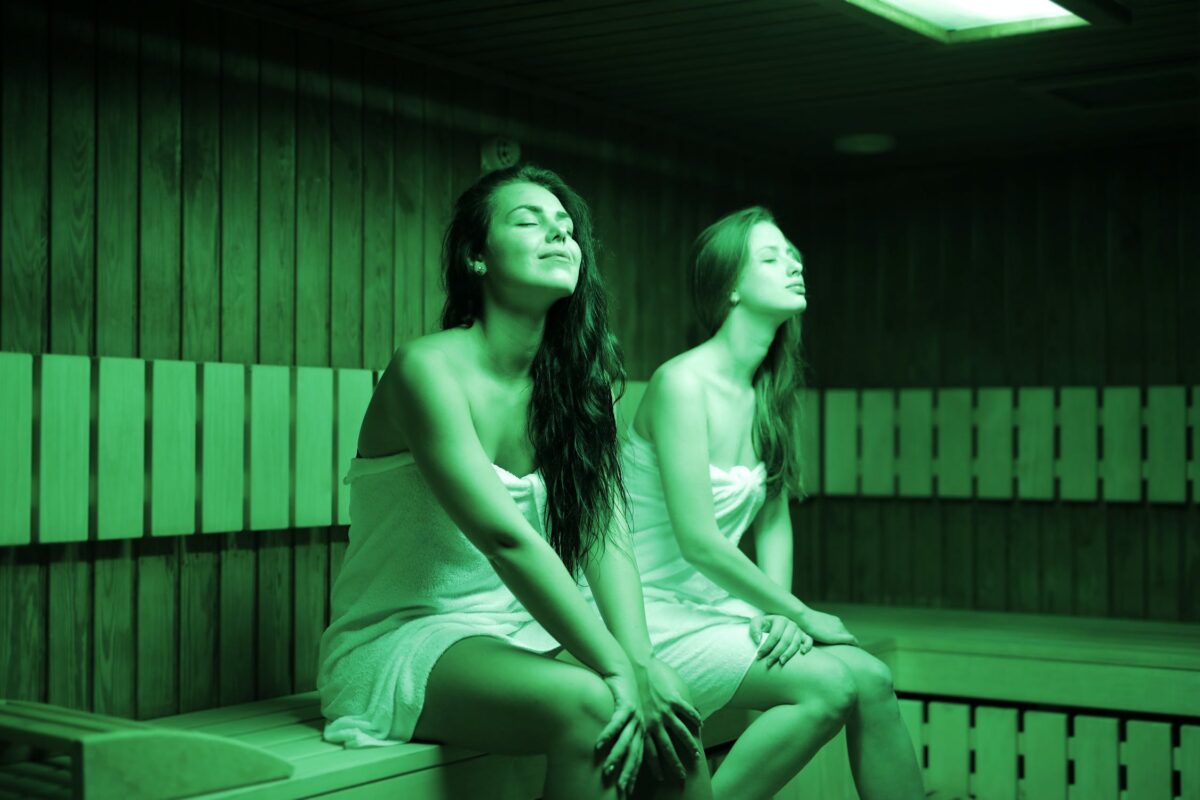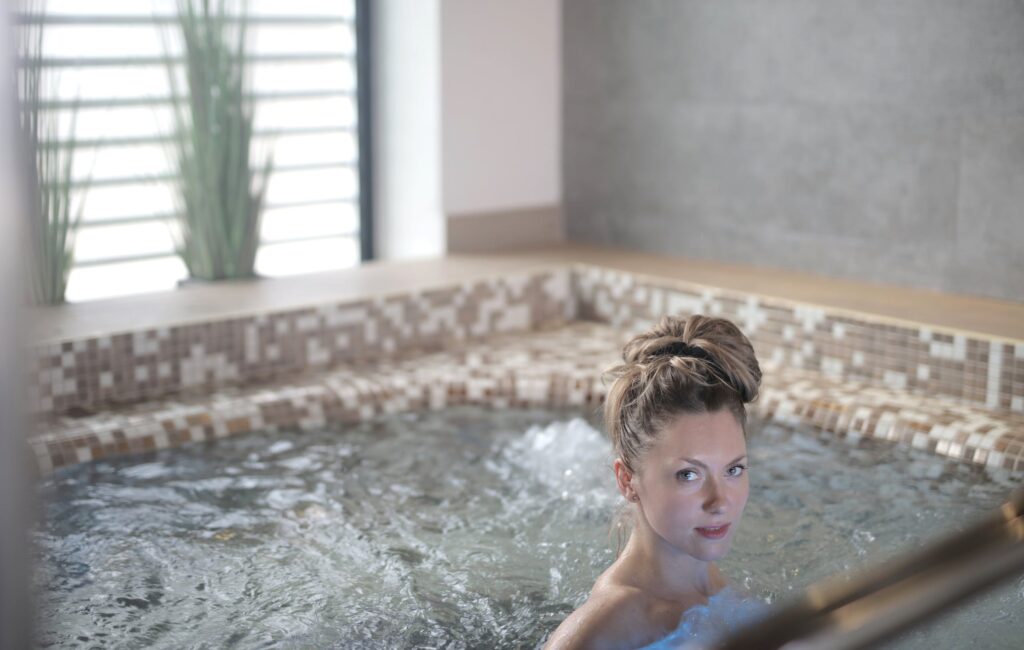Have you ever considered the potential risks involved in enjoying a traditional sauna? These hot spots may be great for relieving stress and improving your health, but it's important to find out if there are any hidden dangers or drawbacks. The high heat and steam of a traditional sauna can be very relaxing. However, they may have some undesirable side effects. Extreme heat can cause dehydration and hyperthermia, both of which can be dangerous, especially for people who already have health issues. Additionally, prolonged sauna sessions may lower blood pressure, leading to lightheadedness or fainting. To maximise gains while minimising dangers, a firm grasp of these nuanced considerations is essential.
However, these details just scratch the surface. Let's take a trip through the wisdom of a world-renowned expert in holistic health and wellness as we dig into the world of traditional saunas. The advantages and disadvantages of regular sauna use have been thoroughly studied. Hold on tight as we bust the myths and reveal the realities of sauna use so you may make educated judgements. Are you prepared to immerse yourself in the realm of traditional saunas and come out enlightened?
Traditional Saunas And Their Allure
The ancient appeal of saunas is on the rise again, thanks to the modern world's constant stress and pressure. These peaceful refuges from the bustle of daily life have captured the hearts of today's youth for a good reason. Traditional saunas' widespread acceptance can be credited to their successful delivery of comforting heat and the wide range of psychological and physiological benefits they offer to their users.
Gently Warmth and Unwinding
When you enter a conventional sauna, you will feel the warm air envelop you and slowly absorb into your skin. Just feeling it is enough to make all your worries go. The warmth is only part of the charm; the atmosphere created by the wood panelling, the faint scent of cedar or pine, and the surrounding cushions all contribute to the whole experience. It's a haven where you can disconnect, relax, and let your mind wander in the soothing warmth.
Improved Circulation and Detoxification
The ability of traditional saunas to purify the body is one of its most prominent advantages. In the hot environment of a sauna, your body will sweat out impurities in the form of perspiration. Some people attribute their renewed vitality, healthier skin, and stronger immune systems to the cleansing effects of detoxification. The heat also stimulates the blood arteries to expand, which helps boost circulation. Improved health and vigour result from the enhanced delivery of oxygen and nutrients to all body parts via the circulatory system.
Reducing Stress
The modern human experience is rife with stress. The traditional sauna is a peaceful haven to leave worries at the door. The sauna's tranquil setting, therapeutic heat, and quiet isolation combine to provide a meditative experience that helps calm anxious minds. It's a great spot to get some alone time away from the constant hum of technology.
Differences Between Infrared And Traditional Saunas
The methods used by different saunas can vary greatly. An infrared sauna uses both light and heat, rather than just heat, to warm its users, unlike traditional saunas. Far infrared radiation (FIR) is employed in infrared saunas, not ultraviolet light (UV), as with tanning beds. This infrared radiation raises the surface temperature of your skin to about 104 degrees Fahrenheit, causing you to sweat and flush out pollutants.
Health Benefits of Infrared Saunas

The use of infrared saunas has been linked to numerous health benefits that go far beyond simple relaxing, according to a growing body of scientific study. These numerous positive effects on health cover a wide range of areas, giving people extra incentive to include infrared sauna sessions in their wellness regimens. Here are a few illustrative positive results:
- Detoxification: Studies have revealed that infrared saunas aid in detoxing to a greater extent than conventional saunas. The infrared waves' moderate yet penetrating heat can assist accelerate the release of toxins through sweating, leading to more effective detoxification.
- Headache and Stress Relief: Reducing stress and alleviating headache pain can be greatly aided by the gentle heat of an infrared sauna. Heat has a calming effect on the body because it triggers the release of endorphins, the body's natural painkillers and feel-good chemicals.
- Neonatal Care: Contrary to popular belief, infrared saunas have also found use in hospitals that treat premature infants. These saunas are beneficial because they assist babies maintain a healthy body temperature, which is necessary for proper growth and development.
- Cardiovascular Health: Recent studies have shown that regular infrared sauna use can improve cardiovascular function, which in turn reduces the risk of cardiovascular disease. The infrared heat improves cardiovascular health by widening blood vessels, speeding up the heart's natural rhythm, and increasing the body's supply of oxygen-rich blood.
- Blood Pressure Management: Infrared saunas may help people who are struggling with hypertension. Heat therapy, thanks to the vasodilation and increased circulation it induces, can be used as an adjunctive method of controlling hypertension.
- Enhanced Sleep Quality: Infrared saunas may help people who are having trouble sleeping get a better night's rest. The calmness brought on by the sauna's heat, along with the natural cooling of the body afterwards, can make for a more restful night's sleep.
Chronic Pain Relief
Regular sauna usage has been linked to calorie burning, as it has effects similar to moderate exercise. People sensitive to high temperatures enjoy the infrared sauna's milder heat.
People with atherosclerosis (clogged arteries), high blood pressure, arthritis, and migraines benefit from using saunas. According to one study, two or three sessions per week in a traditional sauna reduced the risk of fatal heart disease in males by 23%.
What Are The Dangers Of Infrared Saunas?
The health benefits of infrared saunas have increased in popularity, but as with any wellness practice, there are risks and caveats to be aware of. Remember that everyone is different, and if you have any health concerns, it's best to talk to an expert before using an infrared sauna. Some risks associated with infrared sauna use include:
- Dehydration: Dehydration is possible due to excessive sweating in an infrared sauna. Therefore, drinking plenty of water before, during, and after your session is important. Symptoms of dehydration include lightheadedness, tiredness, and impaired mental performance.
- Heat Sensitivity: Regarding temperature, some people are more delicate than others. People with trouble maintaining a normal body temperature may experience pain, heat exhaustion, or heat stroke if they spend too much time in an infrared sauna.
- Cardiovascular Stress: The cardiovascular system may feel the effects of the infrared sauna's intense heat. Before utilising an infrared sauna, anyone with heart disease, hypertension, or other cardiovascular concerns should talk to their doctor.
- Overheating: Overheating can occur if you use an infrared sauna for an extended period or if the temperature is too high. This can lead to fainting or heat stroke and other symptoms like nausea, headache, and dizziness in extreme circumstances.
- Skin Sensitivity: It's possible that prolonged exposure to high temperatures could irritate or cause rashes in people with sensitive or reactive skin. Sauna use should be stopped immediately if any skin irritation develops.
- Electromagnetic Fields (EMFs): In modest settings, infrared saunas give off some electromagnetic radiation. While research on low-level EMF exposure's long-term and chronic impacts is still in its infancy, some individuals are understandably concerned about the topic.
- Medication and Medical Conditions: Extreme heat and sweating can negatively affect those taking certain drugs, having certain medical conditions, or being pregnant. If you have any preexisting health conditions, you should talk to your doctor before utilising an infrared sauna.
- Infections: There is a risk of bacterial or fungal growth in a sauna's warm, moist conditions, including an infrared sauna. Use clean towels and sit on a towel or mat to reduce the risk of skin infection while in the sauna.
- Eye Health: Eye damage from infrared radiation may occur after prolonged exposure. Eye protection, such as sauna-approved goggles, should always be worn while in the sauna.
- Displacement of Fluid and Electrolytes: Sweating excessively over an extended period can cause a fluid and electrolyte imbalance, negatively affecting health. After using an infrared sauna, it's essential to replenish lost fluids and electrolytes.
The Infrared Sauna: How To Use It?
Learning the ins and outs of infrared sauna use can be the key to a lifetime of health benefits. Understanding the basics of this therapeutic experience is important whether you're a first-timer or want to get the most out of your sauna visits. This tutorial will help you get the most out of your infrared sauna, maximising its therapeutic warmth and health benefits.
Drink Water

Before entering an infrared sauna, it is important to drink enough water. Get hydrated before you start your session. You can always carry some water if the sauna's heat is too intense.
Length Of Time
Start with 15 minutes for first-time users. Sessions should last between 30 and 45 minutes and can be lengthened incrementally. A timer is typically included in saunas, so use it. Staying in there for too long can cause dehydration.
Choose The Temperature
An infrared sauna's typical operating temperature is between 38 and 65 degrees Celsius; newcomers should start at the lower end of the spectrum, and seasoned pros should aim for the upper. For novices, we recommend starting at 38 degrees Celsius. You could benefit from maintaining this temperature for multiple sessions. Until you reach 65 C, you can always raise the temperature with each session.
Overcoming The Drawbacks: A Sauna Enthusiast's Guide To Safe And Fun Sessions
The health benefits of saunas have been recognised for millennia. However, some downsides must be addressed to provide a safe and pleasurable experience, as with any wellness practice. Pre-sauna preparation, including drinking plenty of water, is an important factor.
Pre-Sauna Hydration and Prep Work
A sauna visit can do wonders for your energy levels, but only if you prepare your body beforehand. Water intake should be a top priority before any sauna use. It's important to stay hydrated at all times, especially before and during a sauna session. Drinking water, herbal teas, or coconut water are great options for staying hydrated.
A sauna visit can do wonders for your energy levels, but only if you prepare your body beforehand. Water intake should be a top priority before any sauna use. It's important to stay hydrated at all times, especially before and during a sauna session. Drinking water, herbal teas, or coconut water are great options for staying hydrated.
Moderation and Time Limits
Time passes slowly in the sauna because of the enveloping heat. However, it's important to limit how often you visit the sauna. The best way to ease into it is to start with shorter sessions and work up to longer ones as your body adjusts. Sauna use can be enjoyed safely for up to 20 minutes. Remember that having several shorter sessions is preferable to going through one long, perhaps unpleasant one.
Pay close attention to your physical sensations; you should get out if you feel lightheaded, weary, or uneasy while in the sauna. Refraining from pushing oneself to the maximum when participating in a sauna session is wise. Never put your health at risk by forcing yourself to stay in the sauna for an artificially long time.
Professional Medical Opinion Seeking
While saunas have many potential health benefits, not everyone can safely use them due to preexisting problems. Before using a sauna, you should check with your doctor if you have any preexisting conditions, especially if they involve your heart, lungs, or skin. They can tailor their recommendations to your health situation and medical background to help you avoid any unwanted problems.
Discussing your condition with your doctor can provide light on the potential effects of sauna use. They may advise you to alter your normal sauna regimen or limit your time to ensure safety.
FAQs About Sauna
Traditional saunas are generally safe for most people. However, individuals with certain health conditions, such as cardiovascular issues, respiratory problems, or skin sensitivities, should consult their healthcare provider before using saunas. Pregnant women, young children, and the elderly should also exercise caution and seek medical advice before using saunas.
Yes, prolonged exposure to high heat in saunas can lead to dehydration. Sweating excessively without replenishing fluids can cause a loss of electrolytes and dehydration. It's crucial to drink plenty of water before, during, and after sauna sessions to maintain proper hydration levels. Avoid alcohol and caffeine before sauna use, as they can further contribute to dehydration.
While saunas are designed to generate heat, there is a risk of overheating if caution is not exercised. Spending too much time in a sauna, especially if you are not accustomed to the heat, can lead to symptoms like dizziness, nausea, and even heatstroke. It's essential to listen to your body, keep sauna sessions within a reasonable duration, and exit if you start feeling uncomfortable.
Saunas might cause skin irritation for some individuals, especially if they have sensitive or easily irritated skin. Prolonged exposure to high heat can lead to dryness, redness, or itching. To minimize the risk of skin irritation, it's advisable to shower before entering the sauna, keep sessions short, and moisturize your skin after the session. If you have concerns about your skin's reaction, consult a dermatologist.
Saunas are warm and humid environments that could potentially promote the spread of infections, including viruses and bacteria. To mitigate this risk, it's essential to follow proper hygiene practices. Always use a clean towel to sit on, avoid direct skin contact with the sauna benches, and consider using disposable seat covers. Additionally, it's recommended to avoid saunas if you are feeling unwell to prevent the potential spread of illness to others.
Conclusion
Traditional saunas have gained popularity due to their ability to provide comforting heat and psychological and physiological benefits. These hot spots can be great for relieving stress and improving health, but they also have potential risks. Extreme heat can cause dehydration and hyperthermia, which can be dangerous for those with health issues. Additionally, prolonged sauna sessions may lower blood pressure, leading to lightheadedness or fainting.
To maximize gains while minimizing dangers, it is essential to understand the nuanced considerations involved in sauna use. Traditional saunas offer a gentle atmosphere, a pleasant atmosphere, and a soothing atmosphere that helps users relax and unwind. They also offer improved circulation and detoxification, which can lead to renewed vitality, healthier skin, and stronger immune systems. The heat also stimulates blood arteries to expand, boosting circulation and improving health and vigor.
Infrared saunas, on the other hand, use both light and heat to warm its users, using Far infrared radiation (FIR) instead of ultraviolet light (UV) like tanning beds. This infrared radiation raises the skin's surface temperature to about 104 degrees Fahrenheit, causing sweating and flushing out pollutants.
The health benefits of infrared saunas go beyond simple relaxation. Studies have shown that infrared saunas aid in detoxification, headache and stress relief, neonatal care, cardiovascular health, blood pressure management, enhanced sleep quality, chronic pain relief, and calorie burning. Infrared saunas can help people with atherosclerosis, high blood pressure, arthritis, and migraines, as well as those with atherosclerosis (clogged arteries), high blood pressure, arthritis, and migraines.
In conclusion, traditional saunas offer numerous benefits, including detoxification, headache and stress relief, neonatal care, cardiovascular health, blood pressure management, enhanced sleep quality, chronic pain relief, calorie burning, chronic pain relief, and reducing the risk of fatal heart disease in males by 23%. By understanding the potential risks and benefits of traditional sauna use, individuals can make informed decisions about their health and wellness routines.
The health benefits of infrared saunas have gained popularity, but there are risks and caveats to be aware of. Dehydration, heat sensitivity, cardiovascular stress, overheating, skin sensitivity, electromagnetic fields (EMFs), medication and medical conditions, infections, eye health, and fluid and electrolyte imbalances are some of the risks associated with infrared sauna use.
To maximize the therapeutic warmth and health benefits of infrared saunas, it is essential to drink enough water before entering an infrared sauna, start with 15 minutes for first-time users, and choose the temperature between 38 and 65 degrees Celsius. Newcomers should start at the lower end of the spectrum, while seasoned pros should aim for the upper. For novices, starting at 38 degrees Celsius can help maintain this temperature for multiple sessions.
Overcoming the drawbacks of infrared sauna use is crucial for a safe and enjoyable experience. Pre-sauna preparation, including drinking plenty of water, is an important factor. Water intake should be a top priority before any sauna use, especially before and during a session. Drinking water, herbal teas, or coconut water are great options for staying hydrated. Time passes slowly in the sauna because of the enveloping heat, but it's important to limit how often you visit the sauna. The best way to ease into it is to start with shorter sessions and work up to longer ones as your body adjusts. Sauna use can be enjoyed safely for up to 20 minutes, but remember that having several shorter sessions is preferable to going through one long, perhaps unpleasant one.
Pay close attention to your physical sensations; you should get out if you feel lightheaded, weary, or uneasy while in the sauna. Refrain from pushing yourself to the maximum when participating in a sauna session. Never put your health at risk by forcing yourself to stay in the sauna for an artificially long time.
Professional medical opinion seeking is also necessary to ensure safety when using infrared saunas. Before using a sauna, check with your doctor if you have any preexisting conditions, especially if they involve your heart, lungs, or skin. They can tailor their recommendations to your health situation and medical background to help avoid unwanted problems. Discussing your condition with your doctor can provide light on the potential effects of sauna use, and they may advise you to alter your normal sauna regimen or limit your time to ensure safety.
Content Summary:
- Have you ever considered the potential risks involved in enjoying a traditional sauna?
- These hot spots may be great for relieving stress and improving your health, but it's important to find out if there are any hidden dangers or drawbacks.
- The high heat and steam of a traditional sauna can be very relaxing.
- However, they may have some undesirable side effects.
- Extreme heat can cause dehydration and hyperthermia, both of which can be dangerous, especially for people who already have health issues.
- Let's take a trip through the wisdom of a world-renowned expert in holistic health and wellness as we dig into the world of traditional saunas.
- The advantages and disadvantages of regular sauna use have been thoroughly studied.
- Hold on tight as we bust the myths and reveal the realities of sauna use so you may make educated judgements.
- Are you prepared to immerse yourself in the realm of traditional saunas and come out enlightened?
- The ancient appeal of saunas is on the rise again, thanks to the modern world's constant stress and pressure.
- Traditional saunas' widespread acceptance can be credited to their successful delivery of comforting heat and the wide range of psychological and physiological benefits they offer to their users.
- It's a haven where you can disconnect, relax, and let your mind wander in the soothing warmth.
- The ability of traditional saunas to purify the body is one of its most prominent advantages.
- In the hot environment of a sauna, your body will sweat out impurities in the form of perspiration.
- The modern human experience is rife with stress.
- The traditional sauna is a peaceful haven to leave worries at the door.
- The sauna's tranquil setting, therapeutic heat, and quiet isolation combine to provide a meditative experience that helps calm anxious minds.
- An infrared sauna uses both light and heat, rather than just heat, to warm its users, unlike traditional saunas.
- The use of infrared saunas has been linked to numerous health benefits that go far beyond simple relaxing, according to a growing body of scientific study.
- These numerous positive effects on health cover a wide range of areas, giving people extra incentive to include infrared sauna sessions in their wellness regimens.
- Here are a few illustrative positive results:
- Detoxification: Studies have revealed that infrared saunas aid in detoxing to a greater extent than conventional saunas.
- Headache and Stress Relief: Reducing stress and alleviating headache pain can be greatly aided by the gentle heat of an infrared sauna.
- Cardiovascular Health: Recent studies have shown that regular infrared sauna use can improve cardiovascular function, which in turn reduces the risk of cardiovascular disease.
- Blood Pressure Management: Infrared saunas may help people who are struggling with hypertension.
- People with atherosclerosis (clogged arteries), high blood pressure, arthritis, and migraines benefit from using saunas.
- According to one study, two or three sessions per week in a traditional sauna reduced the risk of fatal heart disease in males by 23%.
- The health benefits of infrared saunas have increased in popularity, but as with any wellness practice, there are risks and caveats to be aware of.
- Dehydration: Dehydration is possible due to excessive sweating in an infrared sauna.
- Therefore, drinking plenty of water before, during, and after your session is important.
- Cardiovascular Stress: The cardiovascular system may feel the effects of the infrared sauna's intense heat.
- Before utilising an infrared sauna, anyone with heart disease, hypertension, or other cardiovascular concerns should talk to their doctor.
- Overheating: Overheating can occur if you use an infrared sauna for an extended period or if the temperature is too high.
- Sauna use should be stopped immediately if any skin irritation develops.
- Electromagnetic Fields (EMFs): In modest settings, infrared saunas give off some electromagnetic radiation.
- If you have any preexisting health conditions, you should talk to your doctor before utilising an infrared sauna.
- Use clean towels and sit on a towel or mat to reduce the risk of skin infection while in the sauna.
- Eye Health: Eye damage from infrared radiation may occur after prolonged exposure.






